The Ultimate Guide to Clean Keto. Learn what is clean keto, easy clean keto recipes and your frequently asked questions are answered.
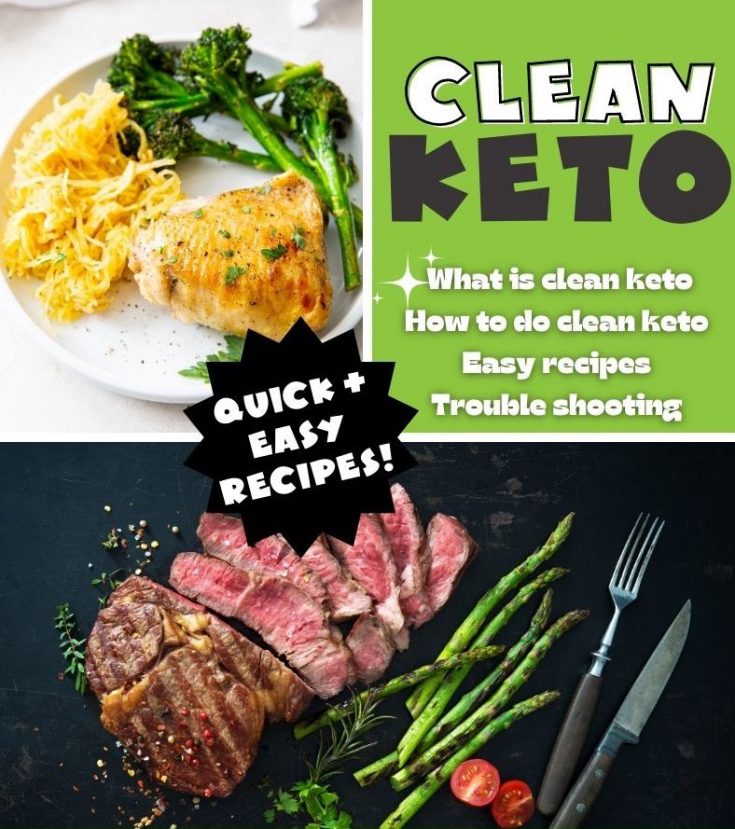
Guide to a Clean Keto Diet
Maybe you've tried getting into ketosis before and failed.
Did you hop on the "dirty keto" faze and didn't see results? Were you unknowingly eating too many calories? Were you over-stressed and spiking cortisol? Did you eat too many foods with hidden carbs? Ate the wrong kind of sugar alcohols?
These are all things I've seen clients do that have prevented themselves from getting into ketosis.
What is Ketosis?
Ketosis is a metabolic state where your body is using ketones and fatty acids as its primary fuel sources instead of glucose. You can get into ketosis in 2 main ways.
- Following a ketogenic diet
- Fasting (restriction of food intake for a certain amount of time)
Both of these options restrict carbohydrates and put your body into nutritional ketosis. When you only consume a little bit of carbs or none at all, your insulin levels remain low and ketones are able to be made. This is called ketogenesis.
Ketogenesis promotes the breakdown of excess fat stores, sparing of lean muscle, and improvement in insulin sensitivity (1).
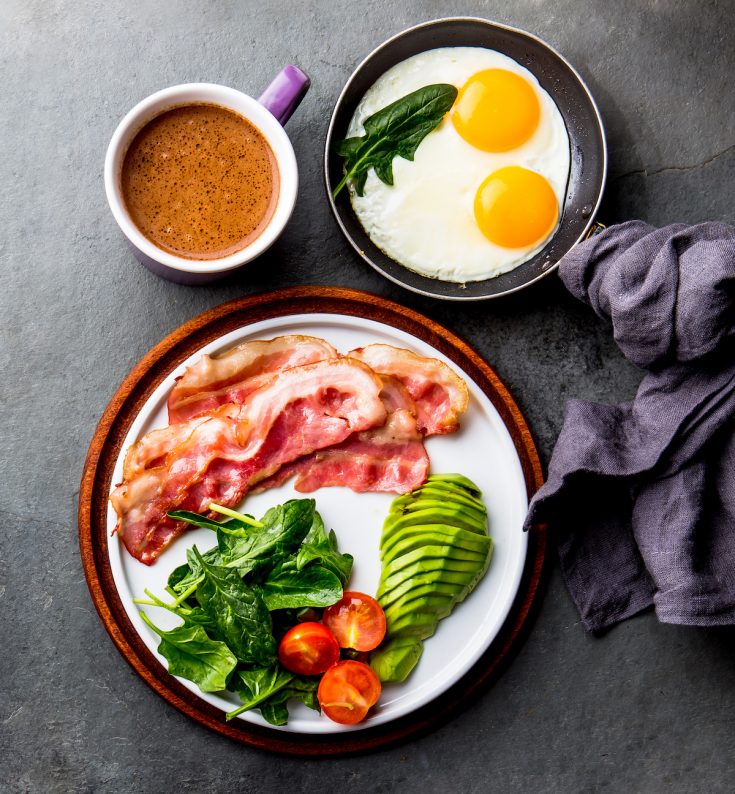
What is a Keto Diet?
A keto diet is one that is low in carbohydrates, moderate in protein and high in fat. You've probably seen these percentages floating around the internet, 75% fat, 5% carbs, 20% protein.
And that's a good starting point for someone that has never done a keto diet before. Once you've been in ketosis for a while you might see that you feel better only consuming 65% of your calories from fat and 30% of your calories from protein.
And those individuals that have a very labor intensive job, or that workout a ton can tolerate upwards to 15% of their calories from carbohydrates. Keep in mind that type of carbohydrates (starchy vs non starchy vegetables, fructose (sugar found in fruit), resistant starches) and carbohydrate timing will all factor into how many carbohydrates you can eat and still stay in nutritional ketosis.
Keto diets have been shown to be superior to low fat low calorie diets for weight loss, fat loss and visceral fat loss. Improvements in blood sugar control, insulin sensitivity, and some heart disease risk factors have shown to be improved when following a keto diet.
When following a keto diet, many people see long term success when they make it part of a healthy lifestyle. This includes getting adequate sleep, proper hydration, stress reduction and physical activity.
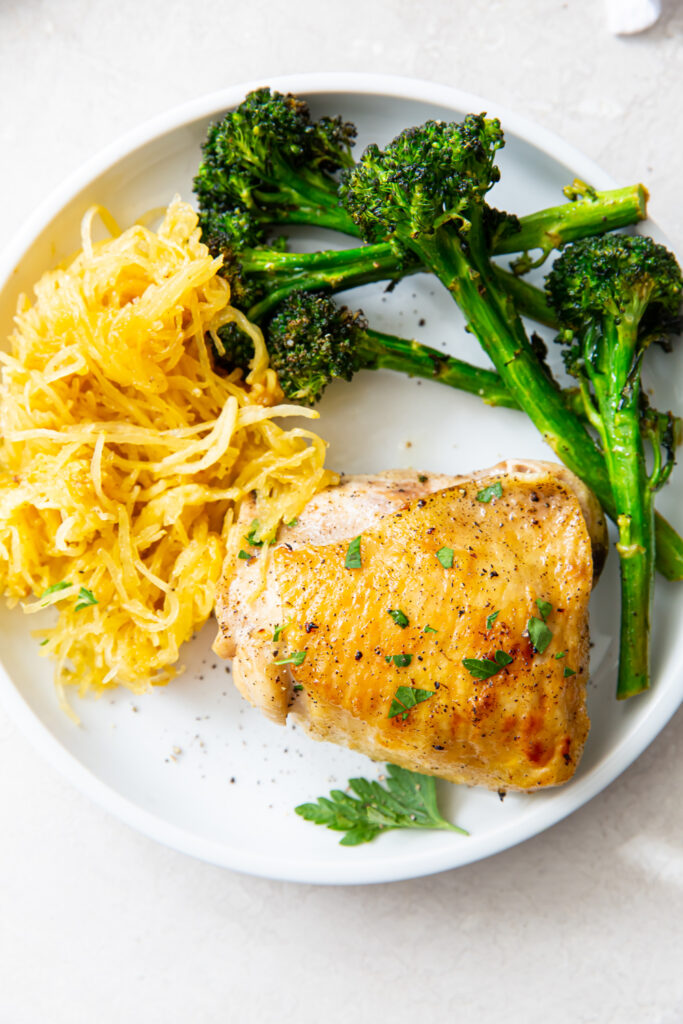
What is a Clean Keto Diet?
A clean keto diet is one in which whole foods are emphasized, and alcohol, vegetable and seed oils, grains, sugar alcohols, artificial sweeteners and dairy are avoided. This is primarily to reduce inflammation.
It still follows the rules of high fat, moderate protein and low carbohydrate.
Alcohol should be avoided because it can increase gut permeability (3). So what does this mean?
Basically it increases the chances that small food particles or bacteria will go through the gut lining and cause inflammation. This is seen commonly when people have unknown food sensitivities.

It's important to prioritize gut health for overall health.
Symptoms of food sensitivities may include:
- Migraine or headaches
- Stomach ache
- Bloating
- Cough
- Runny nose
- Irritable bowel
- Hives
- Depression
- Fatigue
Vegetable oils and seed oils along with grains are high in Omega 6 fatty acids. Diets that are high in Omega 6 have been known to inhibit the anti-inflammatory and inflammation resolving effect of omega 3 fatty acids (4).
With clean keto, most choose to limit dairy as well. Experts believe that 68% of the worlds population has lactose malabsorption (5). For those that chose to consume dairy on a clean keto diet, grass-fed dairy options are preferred for their superior nutritional makeup.
Cows that have been raised on a pasture (grass-fed) produce milk that is richer in ALA and CLA, have lower ratios of omega 6 fatty acids (FAs) to omega 3 FAs, have higher levels of omega 3 FAs, and higher levels of antioxidants (α-tocopherol and β-carotene) than organic and conventional milks (6).
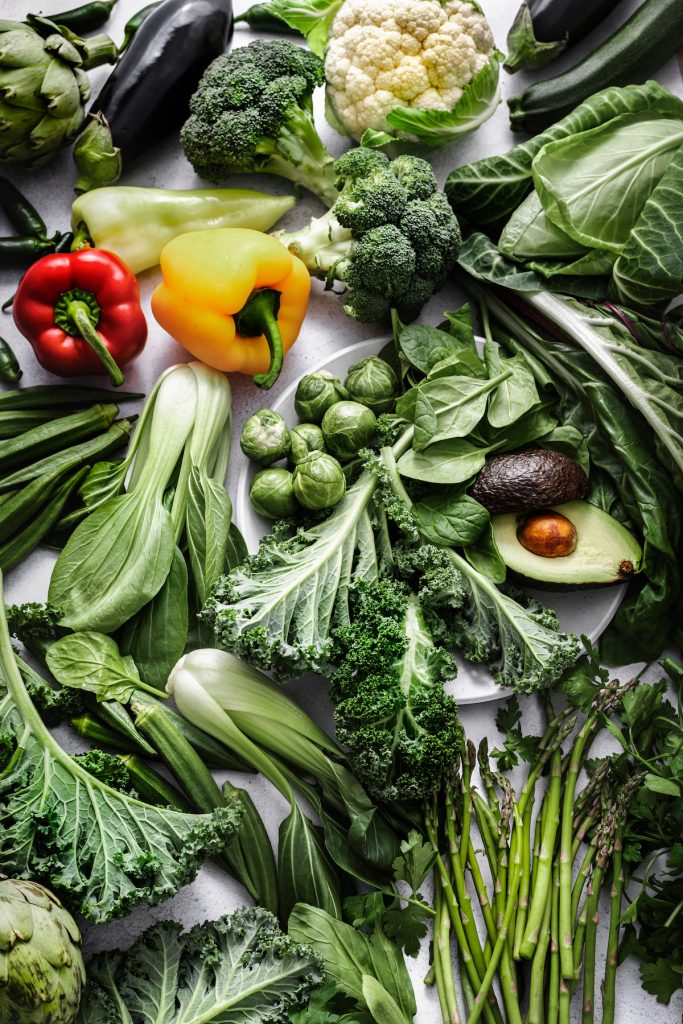
Carbohydrates
To get into ketosis the main factor is limiting carbohydrates, not the type or quality of them.
So technically you could be following a keto diet and be in ketosis all while consuming 20-30g of carbs from highly processed carbohydrate sources (like keto bread, protein bars, keto cereal, and the like), high glycemic index carbs, sugar alcohols, and starchy foods.
On a clean keto diet, carbohydrate sources would come from whole foods such as non-starchy vegetables, low carbohydrate fruit, and seafood that contains carbs.
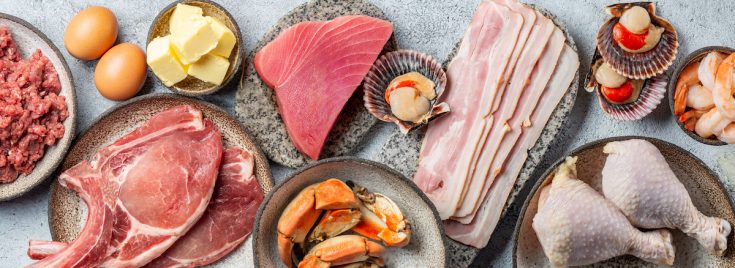
Proteins
Quality of protein matters. On a keto diet, it's easier to hit your fat intake goals by choosing high fat cuts of meat. In the fat and skin of animals is where we find our fat soluble vitamins A, D, E and K.
In addition to vitamins being found in the fat and skin of animals, quality of protein also affects the type and quantity of fatty acids, antioxidant content and leanness of the animal (7).
Grass-fed beef and bison, pasture raised pork and poultry, game such as elk and deer, and wild caught fish should be at the fore front of your protein intake. For those that do consume dairy on a clean keto diet, grass-fed whey protein and grass-fed cheeses are ideal.
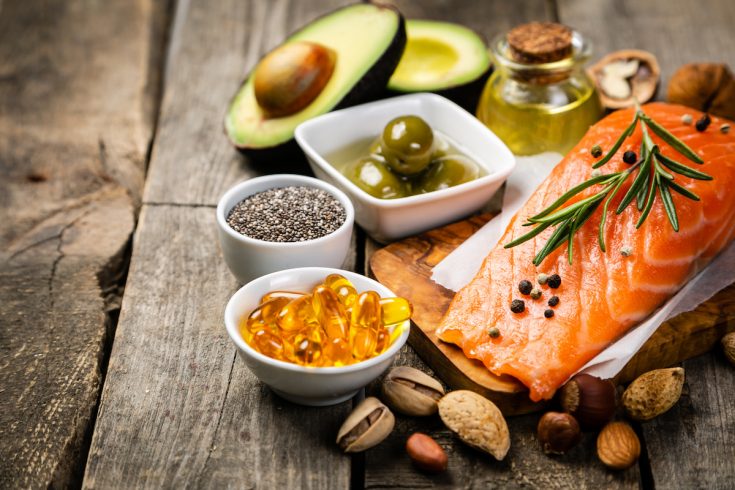
Fats
When choosing which fats to consume on a clean keto diet, we use the same rule of thumb as proteins. Animal fats such as lard, tallow, duck fat, ghee, bone marrow, fish oil etc should come from grass-fed, pasture raised and wild caught when possible.
Grass-fed heavy cream, grass-fed cream cheese and grass-fed cheese are good choices if you choose to consume dairy products.
With non animal based fats, you should try to prioritize whole food. Sources include olives, coconut, avocado, nuts and seeds. Liquid forms such as avocado oil, coconut oil, MCT oil, and olive oil are acceptable as well.
Make sure to keep these in glass and stored in a cool and dark area. Avoid seed and nut oils because they are higher in omega 6 FA and are more likely to oxidize and cause inflammation.
Higher Omega 6 to Omega 3 ratios can lead to the formation of many diseases including vascular disease, cancer, osteoporosis, autoimmune diseases, cognitive decline, non alcoholic fatty liver disease, and dementia (8).
Conversely, lower omega 6 to omega 3 ratios have been associated with decrease in total mortality related to cardiovascular disease, decreased mortality in breast cancer and suppressed inflammation in patients with rheumatoid arthritis.
The optimal ratio may vary from a value of 2:1 to 5:1 depending on an individuals health. Western diets are currently around 15:1 omega 6 to omega 3 ratio (8).
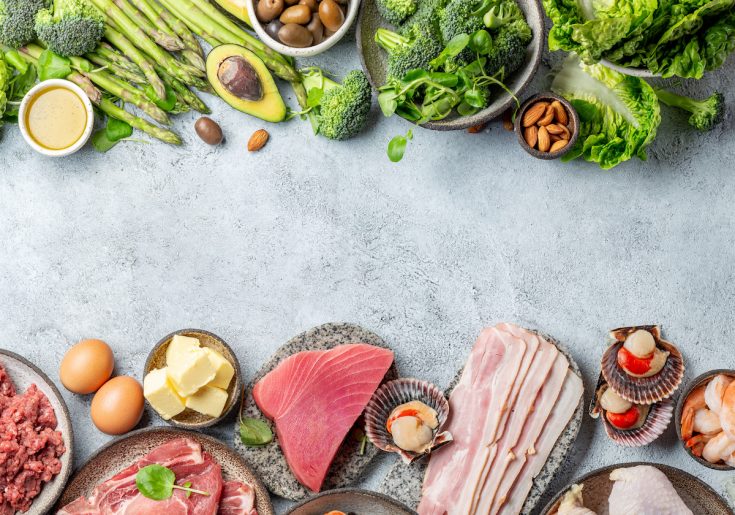
Clean Keto Foods List
Below is a handy list of foods that can be eaten on a clean keto diet. It's an abbreviated list for the sake of size.
It does not list all the non-starchy vegetables that are approved, it lists seafood and shellfish as categories instead of individual foods.
Download a PDF version of this Clean Keto Foods List
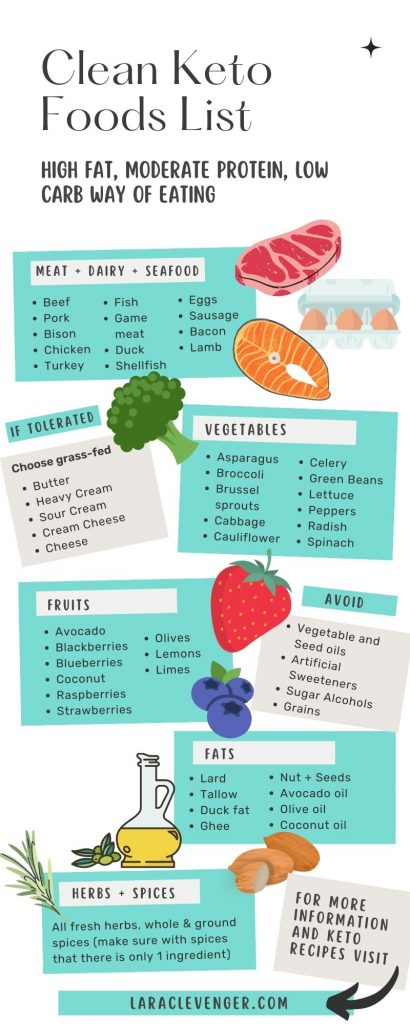
Clean keto recipes
How to eat clean keto can seem overwhelming for beginners. That's why I dedicated an entire post to clean keto recipes.
Below are a few clean keto meal ideas to get you started.
Clean keto breakfast ideas
Clean keto lunch ideas
- Lettuce wrapped burger
- Lettuce wrapped sandwich
- Leftover dinner
- Poke bowl with cauliflower rice
Clean keto dinner recipes
- Keto ground beef casserole
- Easy Garlic Broiled Chicken Thighs
- Sheet pan chicken thighs and low carb vegetables
- Lemon Garlic Shrimp on the Blackstone Griddle
Clean keto sides
- Air fryer spaghetti squash
- Instant Pot mashed cauliflower
- Air Fryer frozen Brussel sprouts
- Zucchini on the Blackstone Griddle
Clean keto snacks
- Olives
- Avocado
- Nuts
- Seeds
- Coconut
- Berries
Where to buy high quality meats, fats, vegetables and fruits
One of my favorite places to buy grass-fed meat and high quality fats is US Wellness Meats! I've bought their duck fat, beef tallow, ground beef with heart, brisket and a few other miscellaneous products that are hard to find locally.
In the past I've also bought a half of a grass-fed cow and placed it in my deep freezer. Also when I lived in county, I would buy raw heavy cream from one farm and then pasture raised chicken and ducks eggs from another.
Eat Wild is another great resource. It's basically an online director of farms that you can find grass-fed beef and pasture raised animals. You can chose to search by state and see which farms are closest to you.
Most of the farms on Eat Wild also have chicken and or duck eggs, tallow or lard, vegetables and fruit for sale.
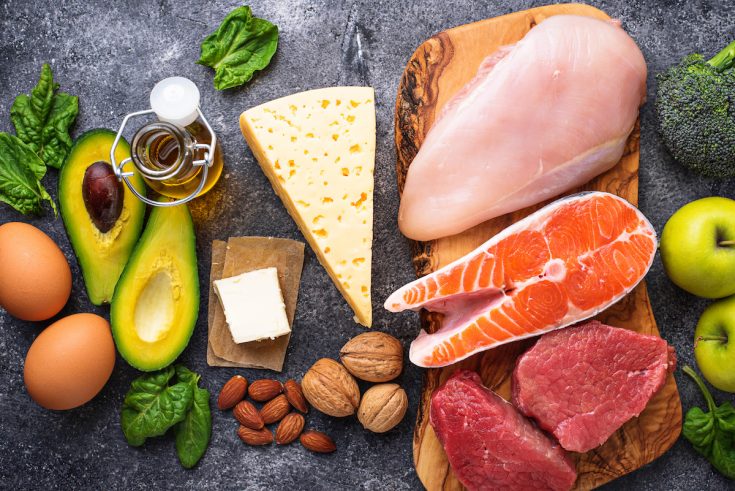
FAQS
Clean keto prioritizes eating nutrient-dense whole foods, whereas dirty keto doesn't put an emphasis on quality of the food consumed. On dirty keto sugar alcohols and artificial sweeteners are consumed such as in diet soda and keto baked goods.
On dirty keto people typically count net carbs (total carbs minus fiber minus sugar alcohols). On dirty keto some people consume low carb fast food and convenience foods.
Clean eating is a diet that promotes eating nutritious foods and avoiding processed foods. The focus is on food quality. It's most similar to a Paleo diet since they focus on food quality as well.
It does not place a restriction on carbohydrates and glucose is the main fuel source for the body. Keto is a low carb diet where the body adapts and uses fatty acids and ketones for its main fuel source.
If you've followed a keto diet before that was full of overly processed foods, poor quality foods or lots of sugar alcohols and you are over weight, following a clean keto diet may promote weight loss. If you're over weight or obese, following a keto diet has been shown to promote better long term weight loss than following a low fat diet (9).
Many people see enhanced energy levels when following a keto diet. This may be because they experience less brain fog or have more mental clarity when following a keto diet.
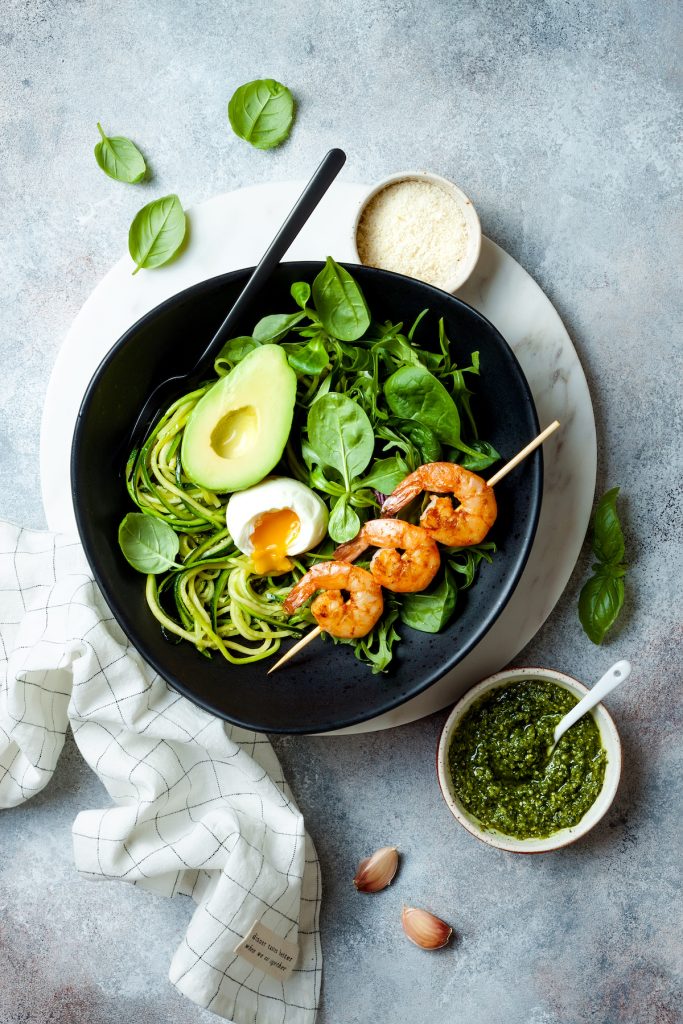
Clean Keto Meal Plan
A clean keto meal plan should focus on high quality proteins and fats, ample low carb vegetables and fruit and adequate hydration. Typically consuming half of your body weight (in pounds) in ounces of water per day is sufficient for adequate hydration.
Ex a 150# person would consume 75 ounces of water per day. You can also consume unsweetened ice tea. Some people have issues tolerating coffee and it should be consumed per individual tolerance. If you're having trouble consuming enough water, you can try adding lemon, lime or cucumber slices to your water.
Breakfast
Scrambled eggs + air fryer bacon + keto hash browns
Lunch
Keto Chicken Wings + celery
Dinner
Broiled chicken thighs + air fryer broccolini + air fryer spaghetti squash
Dessert
Raspberries + Pecans
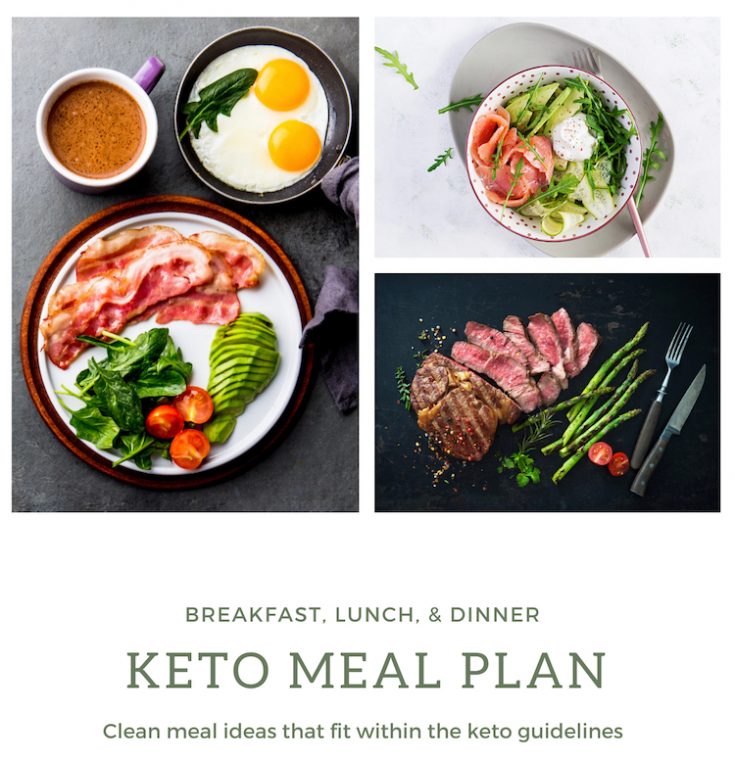
References
- https://www.ncbi.nlm.nih.gov/pmc/articles/PMC6472268/
- https://pubmed.ncbi.nlm.nih.gov/35623861/
- https://www.ncbi.nlm.nih.gov/pmc/articles/PMC2614138/
- https://pubmed.ncbi.nlm.nih.gov/29610056/
- https://www.niddk.nih.gov/health-information/digestive-diseases/lactose-intolerance/definition-facts
- https://www.journalofdairyscience.org/article/S0022-0302(21)00516-6/fulltext
- https://pubmed.ncbi.nlm.nih.gov/20219103/
- https://www.jstage.jst.go.jp/article/jos/68/11/68_ess19111/_pdf/-char/en
- https://www.cambridge.org/core/journals/british-journal-of-nutrition/article/verylowcarbohydrate-ketogenic-diet-v-lowfat-diet-for-longterm-weight-loss-a-metaanalysis-of-randomised-controlled-trials/6FD9F975BAFF1D46F84C8BA9CE860783

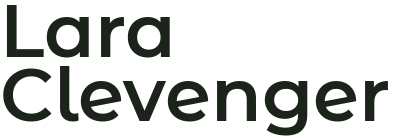

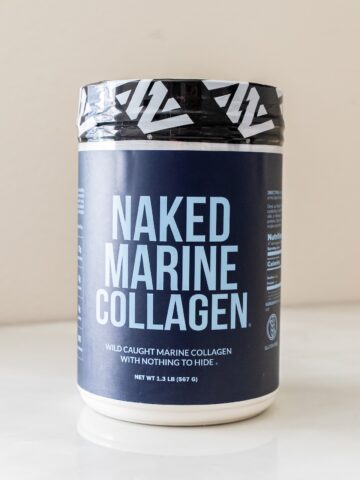
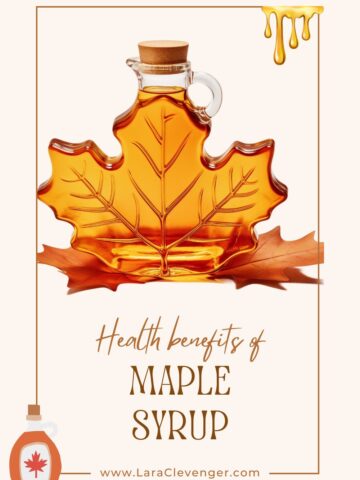
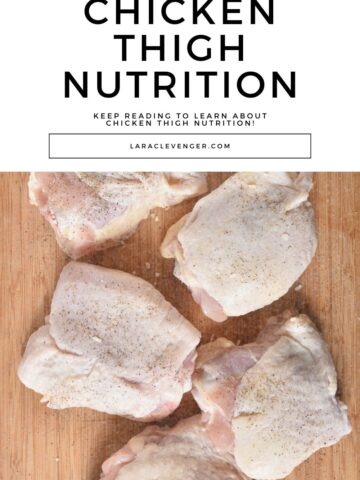
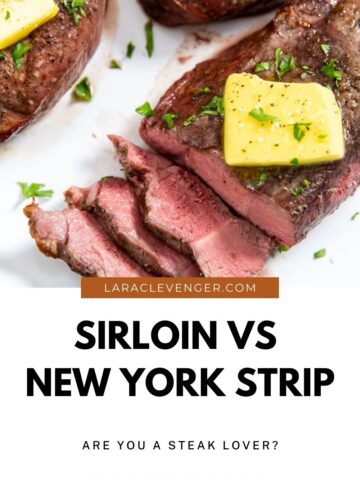
Leave a Reply